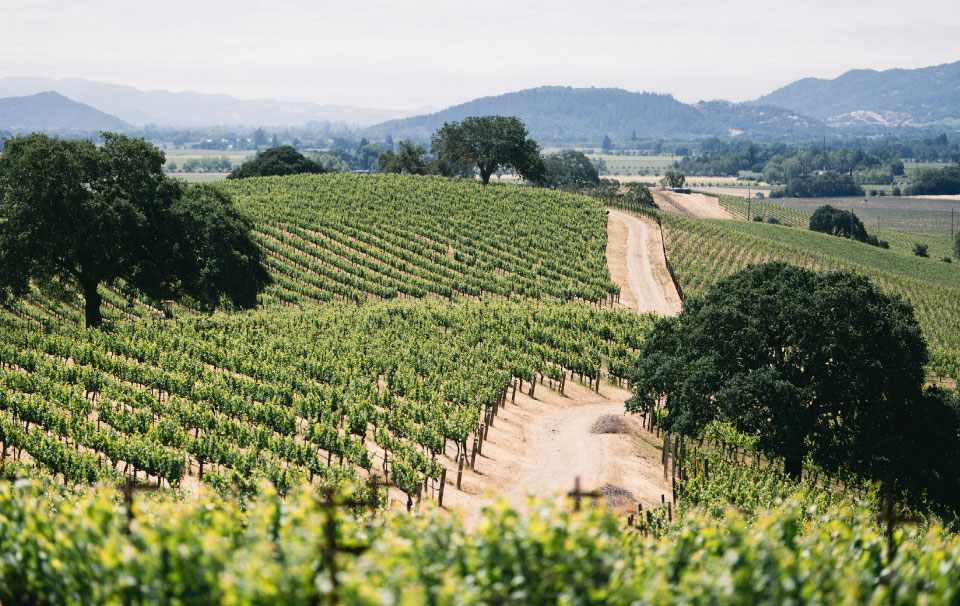
A Portrait of Quintessa
How to capture the story of Quintessa in a single image? This was a question that both inspired and
challenged us.
It’s not as if maps of the estate didn’t exist. But none of them successfully painted the full picture of this property’s distinctive setting in Rutherford between two mountain ranges, nor its astonishing geological complexity, which our scientific research was gradually uncovering. The estate’s natural biodiversity, so intrinsic to our farming philosophy, has also come into sharper focus. And so we embarked on an ambitious, three-year project to capture in one composition the holistic and defining elements of Quintessa that harmoniously converge in our wines
Pulling this off would require the interpretive skills of an artist with the precision of a cartographer. We found this talent in our collaborator, Bob Johnson, an esteemed botanical illustrator and mapmaker who has spent years steeped in viticulture. Over dozens of hours together— walking the property with estate director Rodrigo Soto, winemaker Rebekah Wineburg, and vineyard manager Martin Galvan, poring over photographs and satellite images—the group plotted an illustrated portrait of the estate. One that would artistically capture its natural beauty and meticulously convey the variability of the land, while also telling a narrative about Quintessa.
The story, which Johnson recorded using only Number 5 and 6 lead pencils, begins with the Vaca Mountains on the right side of the map. These ancient volcanic peaks point to the property’s seismic origins, the parent geology of our terroir. We drew on insights about the region’s formation through our work with geologist Brenna Quigley, whose investigations suggest that Quintessa was formed by a landslide off of these mountains, causing multiple hills and hollows that lie like 3-D jigsaw pieces across the map. These diverse elevations, aspects, and fault lines that run through the estate correlate to distinct flavors and expressions that emerge from each block. But collectively these fragments form a single complex organism—on the ground, as in the wine.
This sense of wholeness is also imbued by the property’s natural biodiversity. With only 160 of 280 acres planted to vines, the wild edges contribute to a balanced ecosystem. On the map, one can trace a loop from native vegetation and insectaries below the eastern hills on the right, to the dense oak woodlands bisected by the Napa River on the estate’s northern side. From there, one might continue to the high elevation knoll of Corona block at the center, and down to Dragon’s Lake—a serene spot that attracts waterfowl and river otters. Below it lie the undulating vineyard rows that meet at myriad angles, which Johnson drew freehand, no two of them alike.
From a distance, the map’s fully rendered surroundings are a vivid record of an age-old landscape, before the vineyards were planted. Zooming in, each plant, rooted in and nourished by diverse soils, bears the invisible fingerprint of the property.
Then, almost imperceptibly, dotting the path around Dragon’s Lake and at the “Spiritual Place” atop the Corona block, Johnson drew tiny figures of the Quintessa team. Humans, too, are essential to the biodynamic cycle— stewards of the land who work with nature to support healthy and self-sustaining ecosystems. All parts of the complex matrix that invites us to interpret its uniqueness through thoughtful farming and transparent winemaking.
